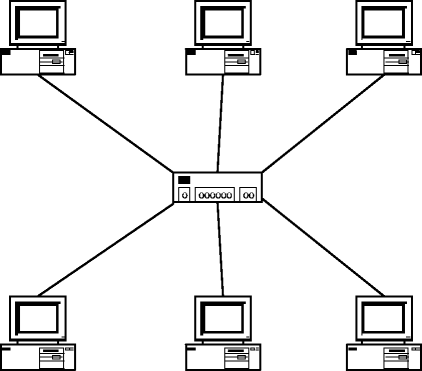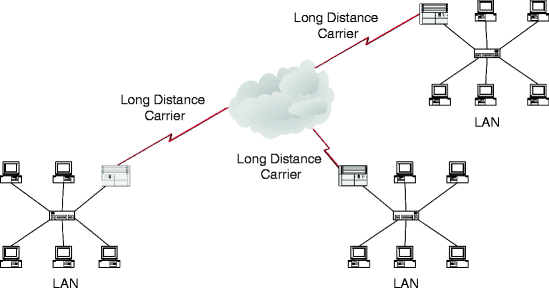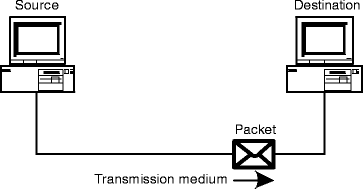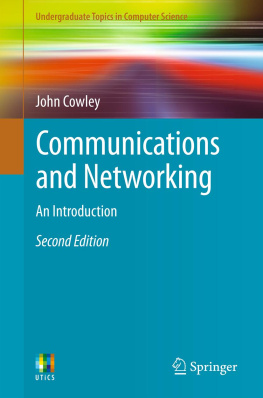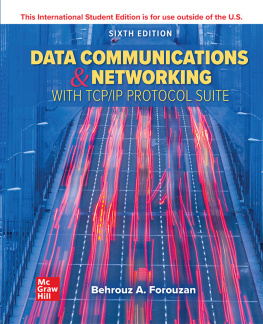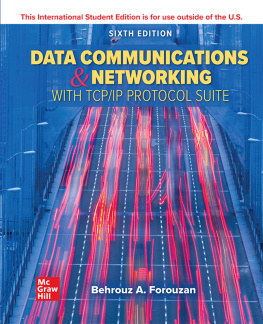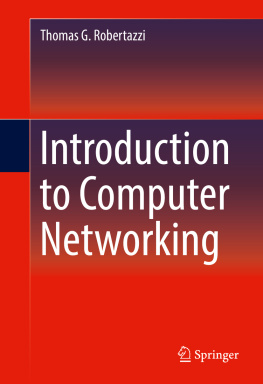John Cowley Undergraduate Topics in Computer Science Communications and Networking 2nd ed. 2013 An Introduction 10.1007/978-1-4471-4357-4_1 Springer-Verlag London 2013
1. Introduction
John Cowley 1
(1)
Kingswinford, West Midlands, UK
Abstract
This short chapter starts by considering how we can define what a network is. Next, there is a short discussion of different types of networks. This is followed by an account of the reasons why networks are used. Then, there is a discussion of communication between computers. Several basic terms used when discussing computer communication are introduced.
1.1 What Is a Network?
A network consists of a number of interconnected, autonomous computers. Being interconnected means that the computers can send information to each other. We need to include the word autonomous in our definition so as to exclude distributed system s . These consist of many processors linked together but acting as one computer under the control of one copy of the operating system. In a network, however, all the computers have their own operating system and can act independently. The hardware and software of which a network is composed are considered in later chapters of this book.
1.2 Types of Networks
Local area network s (LANs) are limited to a small geographical area. LAN data transfer rates tend to be very high. The whole LANcomputers, cables and all other componentsis usually owned by one organisation, for example, a business. Further details of LAN technologies are given in shows a LAN.
Wide area network s (WANs) connect computers over long distances, even right round the globe. WAN data rates are typically lower than those of LANs. WANs are normally used to interconnect LANs. It is uncommon for an entire WAN to be owned by one organisation. Almost always, third-party telecommunications carrier companies will provide the long-haul links. Further details of WAN technologies and services are given in illustrates a WAN.
You may also encounter the term metropolitan area network (MAN). MANs are a halfway house between LANs and WANs. They can span an entire city and its suburbs, but their reach is not as great as that of WANs.
Personal area network s (PANs) and home area network s (HANs) are very short-range networks. These are described in .
1.3 Reasons for Networks
LANs make it possible to share computer hardware, software applications and data files. They also make communications such as e-mail or instant messaging possible. WANs enable the same possibilities as LANs, with the added advantage of a worldwide reach.
1.4 Communication Between Computers
1.4.1 Source, Destination and Transmission Medium
Whenever information is sent through a network, there is always a source (the sending computer), a medium along which the data travels (often, but not always, a cable) and a destination (the receiving computer). This is shown in Fig..
Fig. 1.3
Source, destination and transmission medium
1.4.2 Packet
The data is usually sent in a packet , a unit of information suitable for travelling between one computer and another (see Fig. ). In addition to the data itself, the packet will contain addressing information. The source address in a packet identifies the sending computer. The destination address identifies the receiving computer. Besides address information, the packet will also contain other items that are needed to facilitate communication. Details of the structure of various kinds of packets will be given later in this book.
1.4.3 Protocol
When we want to send a packet of data from one computer to another, it is vital that the source, the destination and any other devices on the network all use the same protocol . A protocol is a set of rules. These rules make communication via a network work satisfactorily. Outside the field of computer science, one meaning of the word protocol is a code of conduct. We find the word used this way in the phrase the protocols of the Geneva convention. An explanation of how various protocols work together to facilitate communication can be found in (Sect. 3.1).
1.5 Summary
This introductory chapter started by considering the definition of a network. Next, different types of networks were briefly discussed and then some reasons why networks are used were given. Finally, computer communication and some of the basic terms used were introduced.
1.6 Questions
What are the differences between WANs and LANs ?
What benefits do networks offer?
Why do data packets need to include addresses along with the data?
What is a network protocol ?
John Cowley Undergraduate Topics in Computer Science Communications and Networking 2nd ed. 2013 An Introduction 10.1007/978-1-4471-4357-4_2 Springer-Verlag London 2013
2. Communications Technologies
John Cowley 1
(1)
Kingswinford, West Midlands, UK
Abstract
In this chapter, we look at some of the technologies that are used for computer communications. The chapter starts with an explanation of the differences between serial and parallel data transfer, asynchronous and synchronous communications and duplex, half-duplex and full-duplex communications. There are explanations of the distinctions between data rate, bandwidth and throughput. Next come discussions of modulation and encoding, error control methods, switching and multiplexing. The topologies used in networking are described. Finally, we explore network transmission media.
2.1 Serial and Parallel Communications
Inside the case of a computer, data is often moved around on parallel pathways. Multiple wires are used to transfer whole units of data simultaneously. Parallel transfer is used inside the processor, for example. Outside the processor itself, a parallel bus (a bus is a common path for moving information about) is often used to transfer data. In a peripheral component interconnect (PCI) bus, for example, 64 parallel wires can be used to transfer data between components. If we want to transfer, say, 8 bytes of data, with a 64-bit parallel system, all 8 bytes can be transferred at once. An 8-bit parallel transfer is illustrated in Fig.. A whole byte of information is transferred at once, with each bit of the byte moving along its own wire.
Fig. 2.1
Parallel data transfer
Even inside the computer case, parallel data transfer is not always used. For example, a serial advanced technology attachment (serial ATA or SATA) cable may be used to attach a hard disk drive to its controller. It is possible to use parallel connections over short distances to external peripheral devices, for example, a parallel printer. Usually, however, serial connections are used for external connections. In serial transfer, only one wire carries the data, and only one bit is transmitted at a time. Figure illustrates serial transfer.
